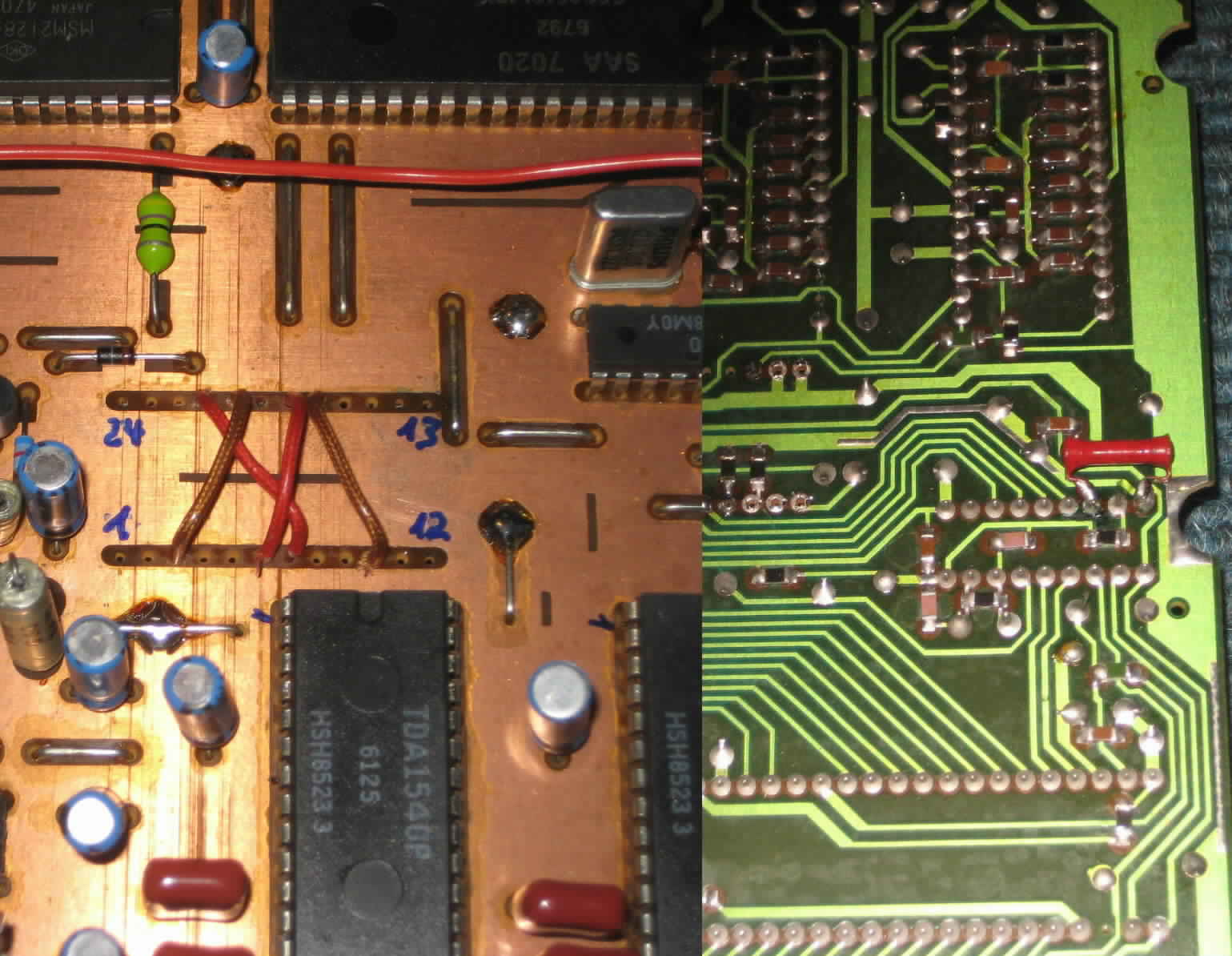Big John
pfm Member
I have a 1984 Philips CD104 CD player (grey case) retired in the 1990's when it persistently malfunctioned.
I did some research on the internet, it appears that most problems with this CD player result from "Griplets" a type of hollow rivet that goes through the double sided PCB joining the ground planes.
The "Griplets" fail simply re-soldering does not work even if a meter shows continuity! Working with my son we did as as strongly suggested on various forums used a fine drill the "Griplets" identifiable as blobs of solder were drilled through then wires were pushed through and soldered on each side. This player has fixed signal/phono leads so a pair of my DIY leads were soldered in place, though we had chassis RCA sockets to hand this saved on soldered joints.
The result was even better than I remembered & functioned flawlessly.
The CD104 uses a TDA1540 DAC chip which is 14 bit when Philips discovered that Sony and others were coming to the market with 16 bit Players Philips pushed it's engineers into adding oversampling in the guise of a SAA7030 error correction chip. My reading indicates a Non Oversampling (NOS) mod which involves desoldering & removing the SAA7030 chip and adding a 1k resistor to an isolated leg on another chip to provide 5v to enable 14 bit's to be read, the result is worth the effort and will come next
Below is a photo from the internet showing the cross wiring replacing the SAA7030 chip and resistor together with a few of the "Griplets".

I did some research on the internet, it appears that most problems with this CD player result from "Griplets" a type of hollow rivet that goes through the double sided PCB joining the ground planes.
The "Griplets" fail simply re-soldering does not work even if a meter shows continuity! Working with my son we did as as strongly suggested on various forums used a fine drill the "Griplets" identifiable as blobs of solder were drilled through then wires were pushed through and soldered on each side. This player has fixed signal/phono leads so a pair of my DIY leads were soldered in place, though we had chassis RCA sockets to hand this saved on soldered joints.
The result was even better than I remembered & functioned flawlessly.
The CD104 uses a TDA1540 DAC chip which is 14 bit when Philips discovered that Sony and others were coming to the market with 16 bit Players Philips pushed it's engineers into adding oversampling in the guise of a SAA7030 error correction chip. My reading indicates a Non Oversampling (NOS) mod which involves desoldering & removing the SAA7030 chip and adding a 1k resistor to an isolated leg on another chip to provide 5v to enable 14 bit's to be read, the result is worth the effort and will come next
Below is a photo from the internet showing the cross wiring replacing the SAA7030 chip and resistor together with a few of the "Griplets".





